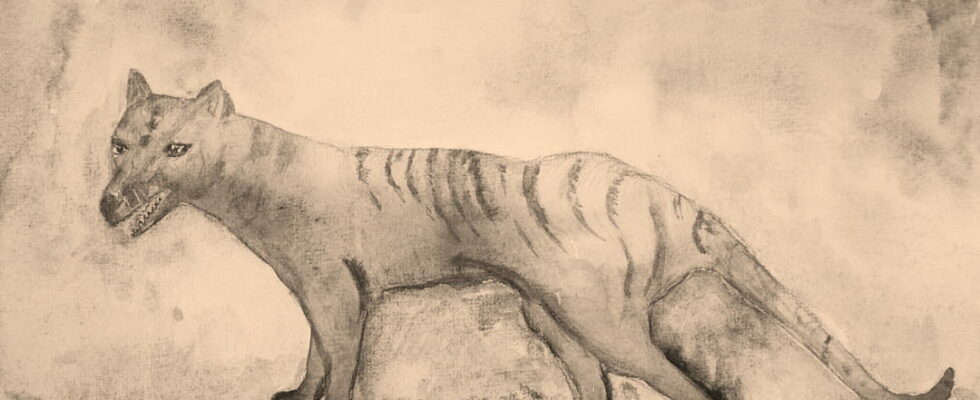This predator, which has been extinct for almost a century, could come back to life thanks to its DNA.
The last representative of this species died in captivity in 1936. Its disappearance had serious consequences: the carnivorous mammal kept diseases under control, particularly by attacking non-native species. Hunting and destruction of its habitat by humans have caused its loss and, consequently, the spread of diseases.
Its reintroduction is therefore being studied. But how can we resurrect a species that has been extinct for almost a century? This is the mission set by the American company Colossal Biosciences, which claims to have reconstructed 99.9% of the genome of this predator. Only 45 gaps, in a genetic blueprint that contains 3 billion pieces of information, remain.
“The samples to which we had access were so well preserved that we were able to recover DNA fragments of several thousand bases,” explained in an interview with New Scientistresearcher Andrew Pask. From a specimen discovered at the Victoria Museum in Melbourne, Australia, long preserved sequences of DNA and RNA could indeed be taken.
To achieve their goal, the researchers therefore plan to implant this reconstructed genome into an egg cell of the closest species still alive to the extinct one. Once the surrogate mother has given birth, the animal will be returned to its original land.
This animal that scientists want to reintroduce is the Tasmanian tiger, also called the thylacine. It is a carnivorous marsupial mammal the size of a wolf, with tabby fur and long canines. It thrived in Australia and New Guinea before the introduction of dingoes and intensive hunting limited it to Tasmania, southeast of Australia.
According to Professor Andrew Pask, head of the Integrated Thylacine Genetic Restoration Research Laboratory at the University of Melbourne, The Guardianthe first “thylacine-like being” could emerge within three to five years. The company is also working on the reintroduction of the woolly mammoth and the dodo.
Some environmental defenders are doubtful and preferred to focus concerns on species that are alive but endangered or threatened. Other doubts also about the capacity to create behind thousands of individuals to revive a stable population of thylacines, as well as the behavior that such specimens will have in today’s environment.
